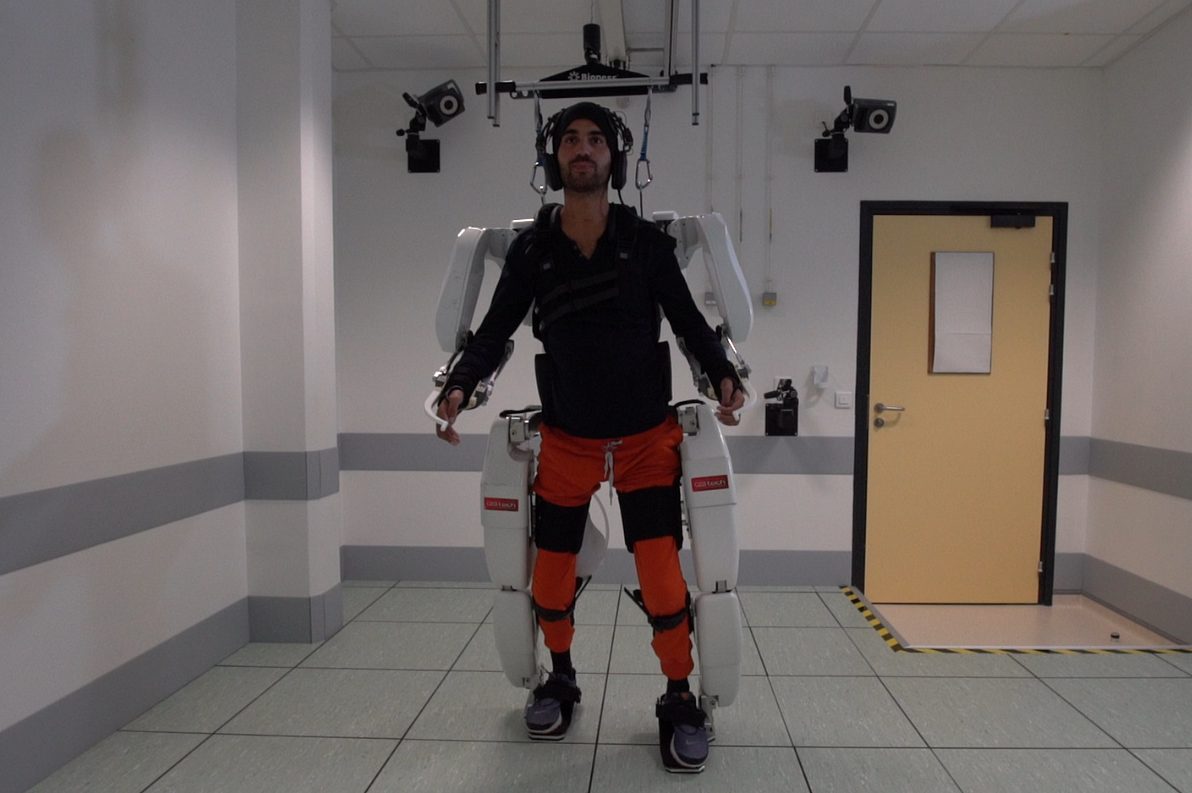Researchers have restored a paralyzed man‘s ability to use his limbs by connecting his brain to a robotic exoskeleton at a facility in France.

The 28-year-old man, who is paralyzed from the shoulders down, successfully used the exoskeleton to walk in a recent trial. The results were published on Thursday in the Lancet Neurology journal.
Researchers at the University of Grenoble and Clinatec, a French research centre, spent two years working with the patient to develop their system.
The patient communicates with his full-body exoskeleton using sensors implanted on either side of his head between the skin and the brain. The devices were positioned to monitor the part of the brain that controls sensation and motor function.
Other projects have used invasive brain surgery to install such sensors, but the French team says it has found a way to implant them in a safer and less intrusive way. The implants also do not require wires to operate.
Researchers and the patient spent two years training the sensors to understand and transmit his brain signals to the robotic exoskeleton. Every session gave him a little bit more control over the exoskeleton. Eventually, he managed to walk on his own, with an overhead harness attached to keep him balanced.
Tom Shakespeare, an expert not affiliated with the project, wrote in a commentary that the exoskeleton is a “welcome and exciting advance.” However, he also pointed out that it’s simply a “proof of concept” and not yet a clinical possibility.
“A danger of hype always exists in this field,” said Shakespeare, who is a professor at the London School of Hygiene and Tropical Medicine.

Get daily National news
“Even if ever workable, cost constraints mean that high-tech options are never going to be available to most people in the world with spinal cord injury.”
The study authors did not attach a price tag to the project.





Comments